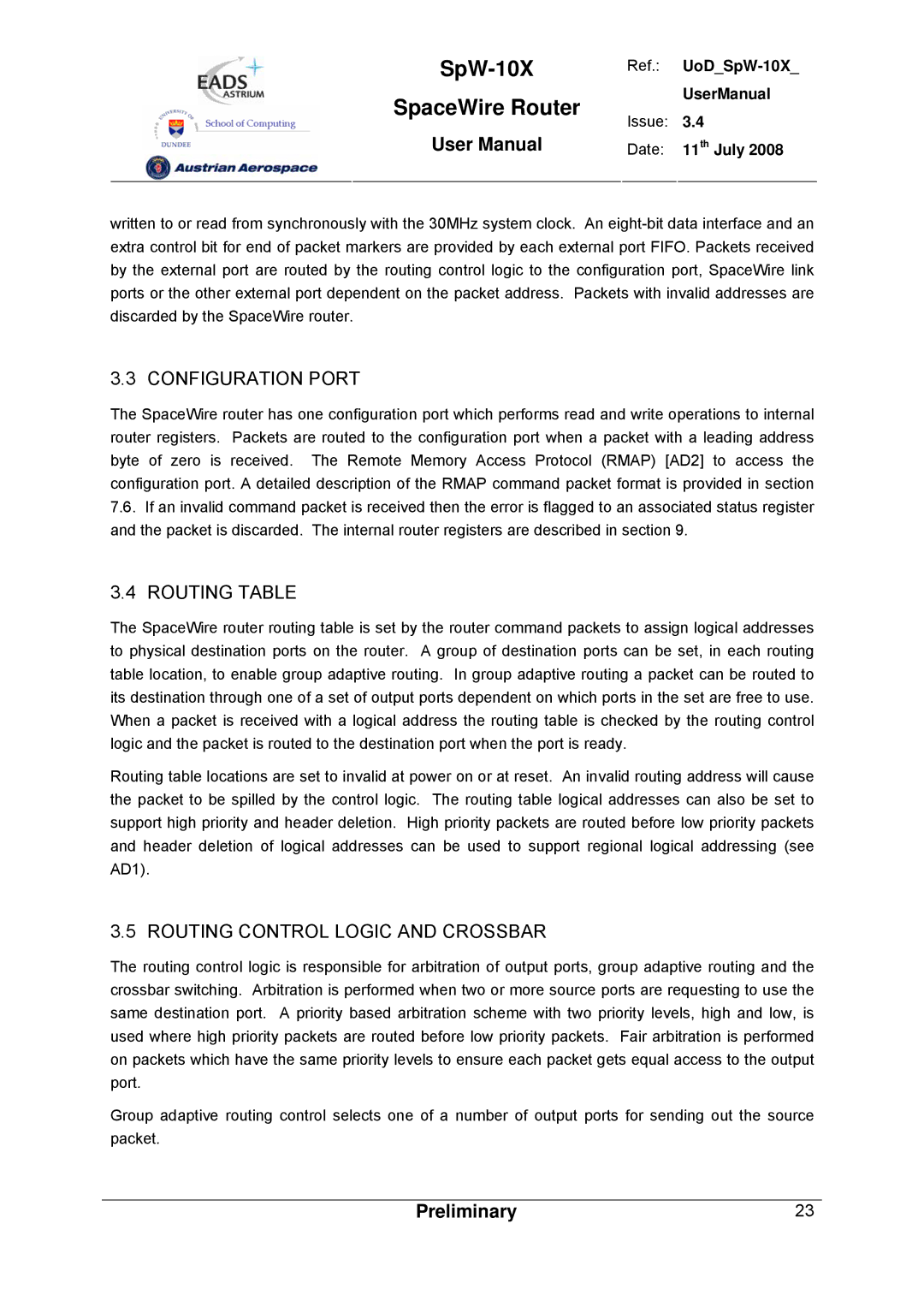
| Ref.: |
| |
SpaceWire Router |
| UserManual | |
Issue: | 3.4 | ||
User Manual | |||
Date: | 11th July 2008 | ||
|
|
|
written to or read from synchronously with the 30MHz system clock. An
3.3 CONFIGURATION PORT
The SpaceWire router has one configuration port which performs read and write operations to internal router registers. Packets are routed to the configuration port when a packet with a leading address byte of zero is received. The Remote Memory Access Protocol (RMAP) [AD2] to access the configuration port. A detailed description of the RMAP command packet format is provided in section
7.6.If an invalid command packet is received then the error is flagged to an associated status register and the packet is discarded. The internal router registers are described in section 9.
3.4 ROUTING TABLE
The SpaceWire router routing table is set by the router command packets to assign logical addresses to physical destination ports on the router. A group of destination ports can be set, in each routing table location, to enable group adaptive routing. In group adaptive routing a packet can be routed to its destination through one of a set of output ports dependent on which ports in the set are free to use. When a packet is received with a logical address the routing table is checked by the routing control logic and the packet is routed to the destination port when the port is ready.
Routing table locations are set to invalid at power on or at reset. An invalid routing address will cause the packet to be spilled by the control logic. The routing table logical addresses can also be set to support high priority and header deletion. High priority packets are routed before low priority packets and header deletion of logical addresses can be used to support regional logical addressing (see AD1).
3.5 ROUTING CONTROL LOGIC AND CROSSBAR
The routing control logic is responsible for arbitration of output ports, group adaptive routing and the crossbar switching. Arbitration is performed when two or more source ports are requesting to use the same destination port. A priority based arbitration scheme with two priority levels, high and low, is used where high priority packets are routed before low priority packets. Fair arbitration is performed on packets which have the same priority levels to ensure each packet gets equal access to the output port.
Group adaptive routing control selects one of a number of output ports for sending out the source packet.
Preliminary | 23 |
